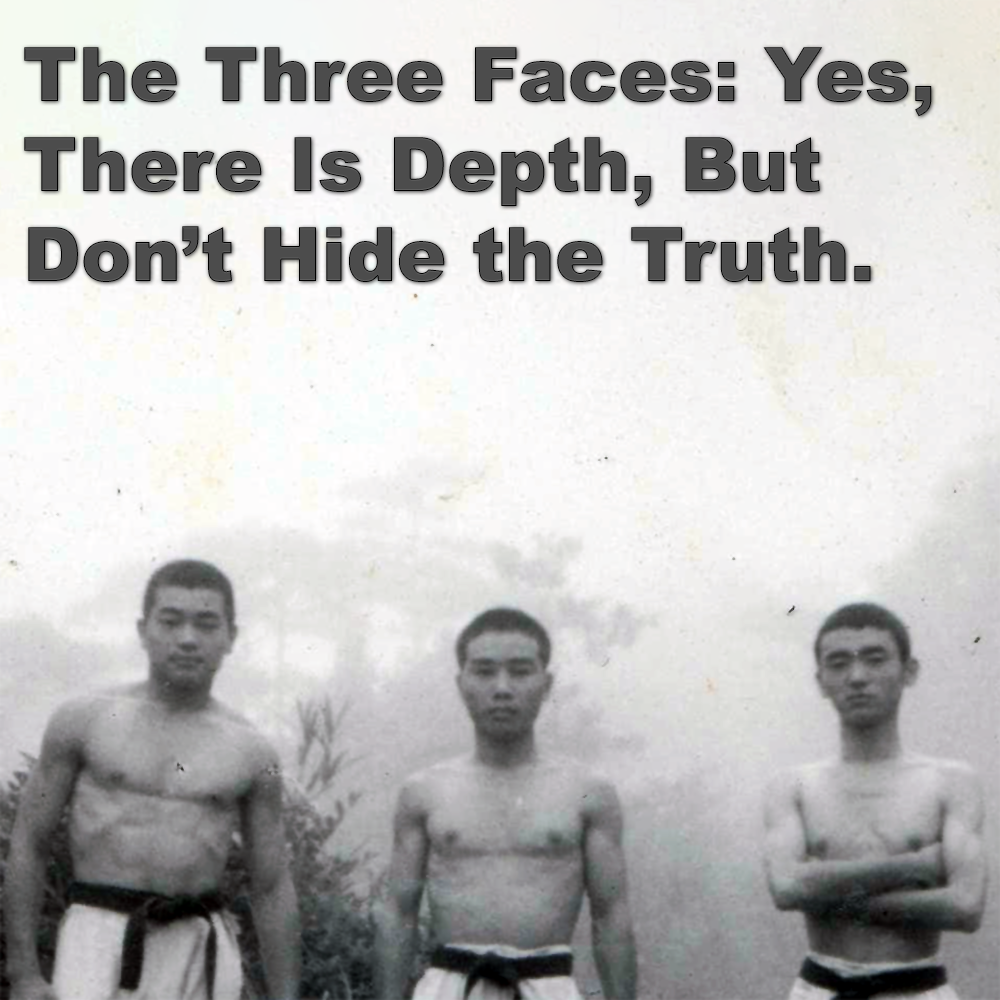
(Approx 1 minute 25 second read)
Someone recently suggested that a Japanese instructor might not show the correct application of karate techniques because of their “three faces”.
.
This phrase refers to the idea, often associated with Japanese culture, that individuals present themselves differently in various social contexts.
.
It is sometimes expressed as “three faces” or “three masks”: one shown to the public, one to close friends and family, and one known only to yourself. The commentator implied that this cultural concept could explain why an instructor might “withhold” realistic techniques from their students.
.
However, this analogy doesn’t align with the purpose of instruction, or teaching in general. A teacher’s role is to impart effective, reliable information. It’s not to obscure essential knowledge, mislead with ineffective methods, or shroud practical applications in cultural metaphors.
.
And the problem can be made worse when students never question the voice of authority from their sensei, and it can often be the case that their sensei themselves teach ‘hand me down’ techniques, without truly understanding them in any depth.
.
Withholding the ‘real’ methods undermines the teacher-student relationship. Why would an instructor – someone entrusted with their students’ development and safety – deliberately mislead them? Martial arts training is a commitment to teaching principles and techniques that may save you life, it demands honesty and transparency, not veils of secrecy.
.
Cultural concepts like the “three faces” can provide interesting insights into human behavior, but they should not be used to justify poor teaching practices. When instructors fail to share correct knowledge and concepts, they fail their students. And in a discipline where lives could be at stake, that failure is inexcusable.
.
True teaching is about helping others with knowledge, skills, and confidence – not about mystifying them with half-truths or cultural symbolism.
.
The dojo must be a place where clarity and trust reign, where the techniques taught are practical and applicable, for whichever context you train in, and where students leave better prepared.
.
.
Written by Adam Carter – Shuri Dojo
.
.
Note that the image is for illustration purposes only and does not reflect on anyones teaching ability.
.
